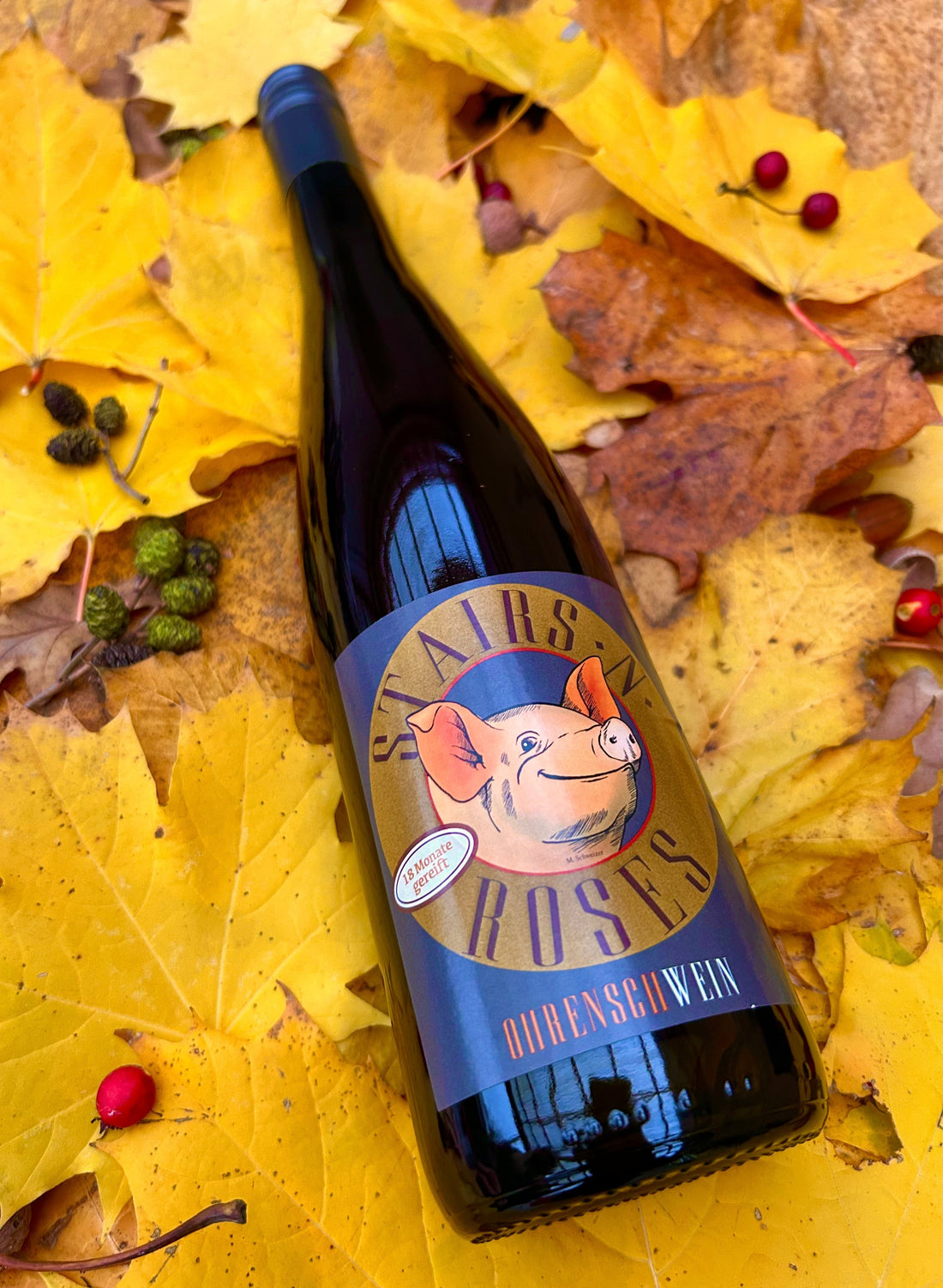Orange wine?? What is that??
Mike Mortensen We love it 👌
Orange wine is a type of wine that gets its color and distinctive flavor from a special vinification method, where white grapes are treated in the same way as red grapes. Instead of being pressed and fermented quickly without skin contact, as is normal for white wine, the skins and seeds are often left in contact with the must for several days or weeks. This process is called maceration, and it gives the wine both its orange to golden color and a complex flavor profile.
Production
To understand the peculiarities of orange wine, one must consider the production itself:
1. The grape variety: Orange wine is made exclusively from white grapes, but it is not the grape variety that determines the color, but the method used to make the wine.
2. Skin contact: Unlike traditional white wines, where the skin is removed from the must soon after pressing, orange wines leave the skin on for all or part of the fermentation. This can vary from a few days to several weeks. This skin contact is what gives the wine its characteristic orange color, as well as additional tannins and phenols that can add structure and complexity.
3. Fermentation: Fermentation often occurs spontaneously, without the addition of cultured yeast. This gives the wine a more natural and unpredictable flavor. Many producers use old techniques and use amphorae (clay jars) or large wooden barrels, which promote micro-aeration and affect the character of the wine.
4. Minimal intervention: Orange wine is often associated with natural wine, which means that the winemaker intervenes as little as possible in the vinification process. Few or no additives are used, and filtration or clarification is rarely done. This gives the wine a more raw, unfiltered character.
Taste and aroma
Orange wine can have a wide range of flavors and aromas, often distinct from both white and red wine. Depending on the type of grape, the length of skin contact, and the specific production methods, orange wine can taste like:
- Fruit: Apple, pear, apricot or citrus fruits may be prominent, but often with a more ripe or dried fruit character.
- Spices and herbs: Many orange wines can have a spicy, almost tannic structure reminiscent of red wine, as well as aromas of herbs or flowers.
- Dried fruit and nuts: Some orange wines have hints of dried fruits such as raisins or apricots, and may also have hints of nuts or honey.
- Tannins and structure: The extra tannin from the skin gives a more pronounced mouthfeel that can be reminiscent of red wine, even though the wine is still made from white grapes.
The typical flavor is complex, with a good balance of fruit acidity and tannins, and it is not uncommon for orange wines to also have a slightly oxidative character, meaning they can develop a "nutty" or slightly aged flavor.
The color of orange wine can vary from a light golden to a deep, dark orange or coppery color. This depends primarily on how long the skins have been in contact with the must, as well as the grape variety used.
History and popularity
Orange wine actually has a very ancient history, originating in Georgia, where wine has been made this way for thousands of years. Today, the technique has been revived, especially among natural wine producers in Europe, and it has gained new attention, especially among those seeking wines with a more authentic and artisanal approach.
In recent years, orange wine has gained great popularity in wine bar and restaurant environments, where it is often presented as a challenge for wine lovers seeking new experiences. Its complexity and unique flavor profile make it an exciting choice for those who want to explore the world of wine in a different way.
Food pairing
Orange wine works well with a wide range of dishes, especially those that can handle the wine's slightly stronger flavor profile and tannins. It often pairs well with:
• Grilled or roasted meat, especially poultry or pork.
• Seafood, which may have a fatty or umami character, which orange wine can complement with its structure.
• Mature cheese and richer, more flavorful cheeses like manchego or gouda.
•Asian dishes with spices, such as Indian or Thai dishes.

